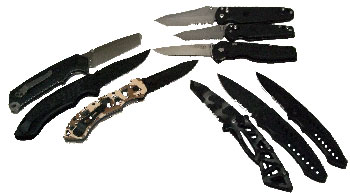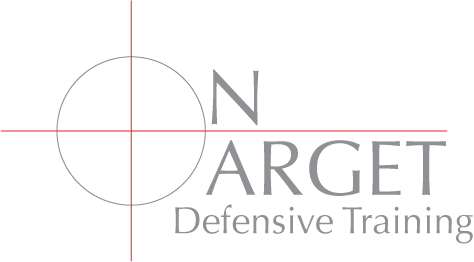Building A Personal Protection Kit |
||||
|
From Sportsman's News Magazine For many people who decide to carry a concealed handgun for personal protection, the process begins with a decision about what kind of gun to carry and ends with what type of holster to carry it in. Some will seek training, but most will rely on the guidance of friends or family members who “have experience with these things.” Over the years of training beginners and professionals, I have heard no end of bad advice, wrong information, and impractical comments from people who “have experience with these things.” Even supposed professional gun dealers often steer customers down a dangerous path. So before we go any further in this article, let me urge you in the strongest possible way to seek the expert training of a certified professional instructor. For those concerned with personal protection, a firearm is not always advisable, practical, or possible. Those who may be disqualified from owning a firearm for legal or immigration reasons still have every right to defend themselves against a violent attack. For some, the issue may be fear by a spouse or significant other about a firearm being present in the home. For whatever the reasons, some people can’t or shouldn’t have a gun. Even for those who do decide to carry a gun for protection, a pistol is not always going to get the job done in every case. Depending on the situation, it is always best to have the right tool for the job. Whether as an addition to your gun or as a substitute for a gun there are some items that people concerned about defending themselves should be aware of and informed about. You probably won’t decide to carry all of these items on you at all times. You may never carry some of them, and others you may decide are indispensable. The purpose of this article is not to build your personal protection kit, but to make the reader aware of items and situations so they can decide what items are best for them to carry in their kit.
Let There Be Light Crime statistics show that most attacks occur in no or dim lighting. To combat the night, anyone worried about defending themselves should have the means to shine some light on the situation. A necessity for a personal protection kit is a powerful and small flashlight. Because of recent breakthroughs in power supplies and LED and Xenon bulb technologies, small but powerful flashlights are readily available. Additionally, these types of lights give the user a tactical and psychological advantage. By blinding an attacker, they offer the means to defend oneself or to escape an attack. While there are many manufacturers of lights that affix to the fore end of a gun, unless you are a member of a S.W.A.T. team leave these lights for the professionals. The drawback to the casual user is that in order to illuminate a subject for target identification, you must point your weapon at them. When checking out a noise in your home, it is a bad idea to point your gun at your spouse, children, or pets until you have obtained many hours of target recognition and identification training and learned tremendous restraint and trigger control. A detached flashlight gives you the ability to illuminate a person and determine if they are friend or foe without pointing your weapon at them and perhaps accidentally discharging your firearm from the startle effect of finding a person in the dark. Another feature you should look for is a tail cap switch that offers both intermittent and constant on capabilities. Manufacturers such as Surfire and Streamlight make lights with “Lock-Out” tail caps. Nite-Ize makes a push button tailcap for Mini Maglites. These give the user the ability to intermittently turn on the light by pressing down on the switch and lets the light quickly turn off by releasing pressure on the switch. Additionally, on some models, a turn of the tail cap in the clockwise direction locks the light on and a turn in the counter-clockwise direction prevents the light from accidentally being turned on which can inadvertently give away your tactical advantage of surprise. Look for a light that has a rugged design that can withstand being dropped or can even be used as a striking implement if needed. There are a variety of techniques for integrating a detached flashlight into your shooting grip and these can be taught to you by an able certified firearms instructor. Additionally, some flashlights have optional or integrated plungers that give the user a better gripping surface and better control of the on and off switch.
Always Bring A Knife To Gun Fight For a variety of reasons, anyone concerned about personal protection should carry a good-quality folding knife. The knife should be easy to open, lock, unlock, and close with only one hand. It should be sharp and hold a good edge. It should be made of a material that won’t get slippery when your hands begin to sweat in a stressful situation. Knives have many uses, the least of which is as a stabbing weapon. Knives can be used to cut restraints if you or others are being held captive. They can be used to cut an attacker and even disarm him by “defanging the snake” or cutting at his arms to make him drop his own weapon or his legs to prevent him from pursuing you as you get away. They can be used to pry out a jammed shell casing and get your gun back in the fight in case of a malfunction. They can be used to jimmie open a locked door or the trunk of a car if you are trapped inside. These are only a few of the uses of a knife in a defensive situation. Even the smallest penknife can be a devastating weapon if nothing else is available. However, the optimal knife is one with a blade from 2.5 to 4 inches long that locks open. Some localities have restrictions on knife blade length so check before you buy to see what is legal where you live. Ideally the knife handle will incorporate a pocket clip that allows it to securely clip to your pants pocket or to the inside of your waistband. Like your gun, a knife needs to be easily accessible to be effective. Pepper -- Not Just A Seasoning The first government agency to realize the effectiveness of pepper extract for defense was the U.S. Postal Service who began issuing their mail carriers with a pepper based spray to defend against dog attacks long before law enforcement agencies commonly employed it against perpetrators. The active ingredient of pepper-based sprays is the oil from very hot peppers called Oleoresin Capsicum (OC). This oil is typically suspended in an inert carrier and placed in an aerosol spray can. They come in foggers, sprays, and foams. These sprays are often referred to as tear gas or by the brand name Mace. Unlike tear gas, which is actually a chemical mixture of CS and CN irritants, OC pepper allows decontamination with soap and water, is all-natural, and is effective against attackers who may be impaired by drugs, alcohol, or mental illness. OC works on the respiratory and nervous systems, as well as by causing pain and inflammation of the mucous membranes. This means that an attacker immobilized by OC will have their eyes actually swell shut, have difficulty catching their breath, become disoriented, feel tremendous pain, and have difficulty continuing an attack while you escape. Kimber, the maker of fine 1911-style pistols has created an innovative delivery system for OC pepper in the form of their LifeAct Guardian Angel device. About the size of a credit card, the LifeAct uses a small explosive charge to deliver an OC “goo” with the pull of a trigger. The LifeAct offers the user two shots in case of a miss or multiple attackers. Traveling at speeds reaching 90 miles per hour, the charge is too fast to be easily blocked or dodged, and the LifeAct is effective up to 13 feet away. OC Pepper is non-lethal, which is a real plus in case of an accidental discharge or a missed shot but can blow back and incapacitate the defender as well as the attacker. Depending upon wind conditions and ventilation, a single spray can take out a large group, whether or not they were the intended targets. There are some misconceptions about the strength of OC pepper. The most common measurements of strength are percentage of OC and Scoville Heat Units (SHU), which is actually a scale developed to measure the hotness of peppers. Basically, the higher the percentage of OC the more effective it is. Most units claim to deliver from 1 to 2 million SHU, which is more than effective for the majority of attacks. Look for an OC device to have between 15-25 percent OC and to offer an ergonomic grip and some type of safety. Additionally, many makers of OC sprays add an ultraviolet dye to the mixture to make identifying an attacker possible in the follow-up police investigation. Set Phasers to Stun Another less lethal option is the application of ridiculous amounts of electricity. Boasting voltages as high as a million volts, stun guns have been around for a very long time. A more modern take on Old Sparky is the addition of a propellant system, some wires, and very sharp darts. Taser introduced this technology and offers their devices for the law enforcement community as well as for the general public. Both Tasers and stun guns work by sending a large burst of voltage at high amperage into the attacker, short circuiting his nervous system. While effective in initially stopping an attack, once the juice stops flowing, the attacker is back in the fight. Taser’s solution is to shoot the darts with their trailing wires into your attacker from a distance of up to 15 feet, lock on the switch, and set the device down and run away. If you do this, Taser guarantees they will replace the unit. The drawback to many stun guns is that you must be in very close proximity to an attacker. However, just seeing the blue arc of electricity shooting across the electrodes will often make an attacker choose someone else to assault. Putting It All Together Selecting which items to purchase for your personal protection kit requires more then can be covered in this space. In the next several issues of Sportsman’s News, we will examine a variety of products available and the best way to carry them on a daily basis. Until then, keep your head on a swivel and check your six! About the author: In addition to his job as managing editor of Sportsman’s News, Dan Kidder is an NRA Certified Firearms Instructor, a former range safety officer for the National Rifle Association Headquarters Range in Fairfax, VA, and a former Marine. He has worked with hundreds of students, including members of local and federal law enforcement, as well as beginning shooters.
Sportsman’s News in no way endorses the use of violence and is not advocating for or encouraging anyone to carry a weapon or use a weapon upon another person. The information provided in this article is general in nature and does not cover any and all circumstances or situations. Sportsman’s News encourages anyone choosing to carry a weapon for personal protection to seek out the services of a qualified professional instructor and to comply with all local and federal laws.
The cost of ignorance is far higher than the price of our training. The Second Amendment of the U.S. Constitution: |
||||
|
Dan Kidder •BCI/ NRA Certified Instructors • (435) 868-8919• Cedar City, UT
|



